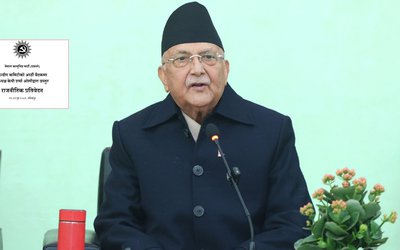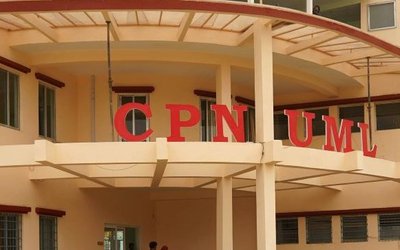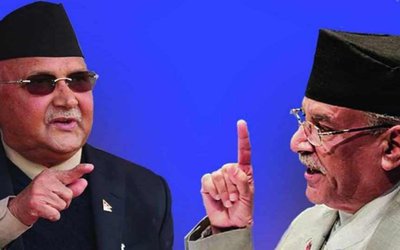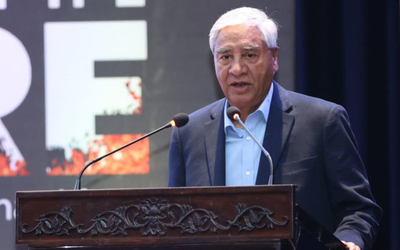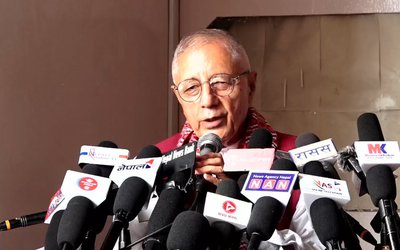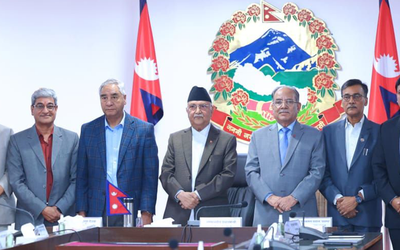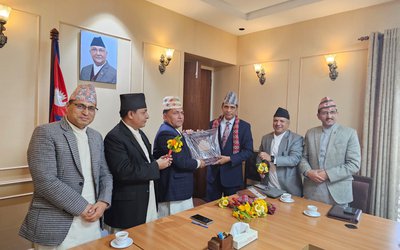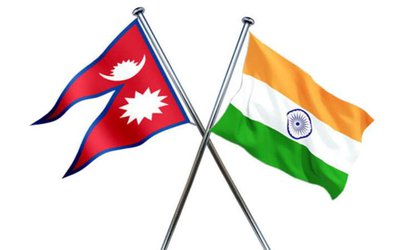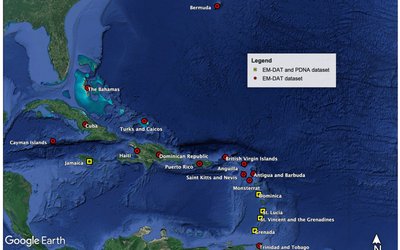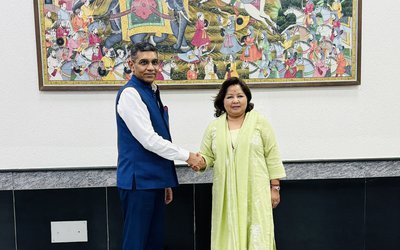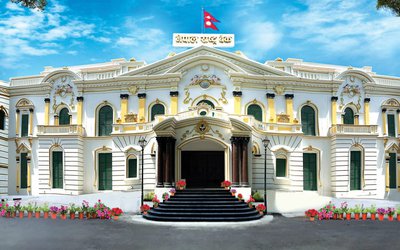
With the 16-point agreement of four major political parties on the disputed issues, which had stalled the constitution writing process for eight long years, Nepal finally appears to be formulating the new constitution. Given the opposition from major Madhesh-based and Janajati parties, the self-declared champions of Federalism, political stability, however, will remain elusive in the days to come. Although the recent agreement will have many political consequences, prime minister Sushil Koirala, who has been in power unchallenged for almost one and a half years due to the dispute will be the first one to face the heat
Prime Minister’s residence in Baluwatar saw unusual activities in the last few days. With the announcement to form an all-party national government by CPN-UML and UCPN-Maoist, the political talks intensified.
After dozens of marathon meeting, on the morning of June 8, four parties agreed on the draft of the new agreement, which was formalized late in the evening by leaders of four main parties. However, 28 political parties of the Maoist-led alliance opposed the agreement and threatened to call a stir, including their mass resignation. Despite the threat, four major political parties decided to march ahead.
Leaders of Nepal’s four major political parties prime minister Koirala, CPN-UML chair K.P. Sharma Oli, UCPN-Maoist leader Pushpa Kamal Dahal Prachanda and Madheshi Janadhikar Forum Loktantrik leader Bijaya Kumar Gachchhadar inked the 16-points agreement at Baluwatar, paving the way for a new political development.
Whether the new agreement will bring any decisive change remains to be been, it is almost certain that the agreement shortened the time of Prime Minister Koirala on the hot seat, injecting a course of instability.
For the country’s major political parties, it took almost eight years to settle the dispute on the new constitution. However, they failed to bring all the political forces in consensus that the political parties had preached.
“This is a historic agreement which will institutionalize the achievements of People’s War and 2005/06 People’s Movement II,” said Maoist leader Prachanda signing the agreement. “We will promulgate the new constitution by July giving hope for the earthquake-affected people.”
After the signing of the agreement, leaders of four major political parties have intensified their inter-party talks with a fresh commitment to prepare the first draft of the new constitution by mid-July and form the new government.
Initiated by CPN-UML and UCPN-Maoist, with a call to form an all-party national government, the political demand focused on the replacement of the government led by Prime Minister Koirala.
However, Nepali Congress led by Koirala considers that there is no immediate threat to the government as the prime minister will resign only after the promulgation of the new constitution. “There is no way to replace the prime minister without promulgation of the constitution,” said Nepali Congress leader Ram Chandra Poudel. “He will continue till the promulgation of new constitution.
However, UML leaders and UCPN-Maoist leaders see it otherwise. “After the endorsement by the CA, Prime Minister Koirala will have to tender his resignation paving the way for the new government under the leadership of CPN-UML,” said Agni Kharel, chief whip of CPN-UML. "Following the agreement, the process of promulgation of new constitution has begun and it is now a matter of months.”
Although CPN-UML and UCPN-Maoist leaders have expressed no public position, they are considering a constitutional way to oust the Koirala-led government if disobeys their request.
“We will see how Koirala will respond now. If he shows his adamancy to resign, we will choose the constitutional way,” said a high level CPN-UML leader on condition of anonymity. "The first step would be to call back all the ministers from the cabinet. If necessary, CPN-UM, UCPN-Maoist and Madheshi Janadhikar Forum will file the petition for a special session and table a vote of no-confidence.”
Along with the agreement on the disputed issues of the new constitution, senior leaders from Nepali Congress (NC), CPN-UML, UCPN-Maoist and United Democratic Madhesi Front (UDMF) have said deliberations over forming a national unity government would be held only after resolving the unsettled issues of the new constitution.
"We are unanimous on settling the political differences on the statute prior to engaging in the formation of a national unity government," said coordinator of UDMF, Bijay Gachchhadar.
Agreement on Provinces
Nepal has missed several deadlines to write a republican constitution. At the heart of the dispute was a disagreement over the number of provinces, their internal boundaries and names.
Finally, the feuding political parties have agreed to split Nepal into eight federal provinces, ending years of their stalemate over the new constitution and aiming to stabilize the country after the civil war and abolition of the monarchy.
The agreement came more than a month after the deadly earthquakes shattered Nepal. "Our priority is to prepare the first draft of the new constitution by mid-July. Disputes related to the delineation of provinces and other minor issues may be settled even after forwarding the settled issues to the drafting committee," said NC leader Poudel.
According to the agreement, the names of the states would be decided by a two-third majority of their respective assemblies, which would be elected after the constitution is prepared.
But dozens of small parties rejected the deal saying that it is a blow to federalism. "This is an anti-federalism agreement," said Rajendra Mahato, leader of Sadbhabana Party.
As per the understanding the agreement would be presented to a special Constituent Assembly, which will include the agreed provisions in the draft of the new charter set to be promulgated by next month.
As political parties are unanimous on many other issues, the 16-point deal includes the structure of provinces, Judiciary, Forms of Government and Electoral Process, promulgation of new constitution and formation of national consensus government and position of president and vice president.
Although many reasons were given behind the current agreement, UML chair K P Oli’s wish to be a prime minister is the main factor. Along with other things, under a deal with the NC, Prime Minister Sushil Koirala would step down once the constitution was written.
Although Prime Minister Sushil Koirala’s followers are saying that he will resign only after the new constitution comes into effect in July, UML-UCPN-Maoist want he quit now.
The sudden breakthrough happened after Maoist leader Pushpa Kamal Dahal Prachanda backed Oli’s ambition in return for an agreement to form a national unity government, that would also include Maoist and Madhesi parties.
Give and Take
The ruling NC-UML agreed on an eight-province model of federalism, as proposed by the Maoist-Madhesi parties, giving up their demand for six-province federalism. In return the Maoist-Madhesis agreed on the NC-UML’s proposal that names and boundaries of federal units will be determined by future provincial councils and the proposed State Restructuring Commission (SRC) respectively. They had earlier wanted ethnicity-based names for provinces whose borders would be pre-determined.
Similarly, Maoists also accepted the NC-UML’s proposal on the system of governance, which is a continuity of executive Prime Minister and ceremonial President. Maoists have agreed to pass the new constitution by writing a note of dissent.
They also agreed that the lower house will have 275 members and 60 per cent of them will be directly elected. Similarly, the upper house will have 45 members and they all will be nominated. They have also agreed to include a threshold of three percent, which will not allow parties unable to secure at least three per cent of the total votes to be in the parliament.
As for the model of judiciary, major parties have agreed to set up a constitutional court which will be the apex authority to sort out disputes between federal units. The existing model of judiciary will remain the same. The Constitutional Court, headed by chief justice, with members including two senior judges and two others from outside, will be there for 10 years.
Many claim the deal is a landmark in Nepal’s political history after the signing of the Comprehensive Peace Agreement (CPA) in 2006. Nepal has seen two elections for CA in the last ten years.
Given the opposition from Madhesh and ethnic based parties, it is yet to be seen how Madheshis and ethnic groups within three major parties respond to the agreement in the time of voting. One can say for sure that this agreement shortens the life of the government but cannot say it will pave the way for the promulgation of the new constitution.

Keshab Poudel
Poudel is the editor of New Spotlight Magazine.
- US SUSPESION OF GRANT: Impact On Nepal
- Mar 10, 2025
- Helvetas Nepal has been instrumental in Nepal's development.: Dr. David Seddon
- Mar 08, 2025
- PM OLI’S MOVE TO REMOVE MD GHISING: Sparking Political Clash
- Mar 07, 2025
- Nepal and India: More Cross Border Transmission line
- Feb 12, 2025
- MAHAKUMBH 2025 Festival Of The Century
- Feb 10, 2025
